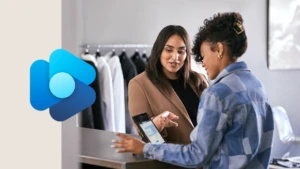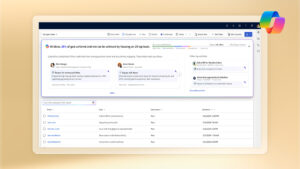
Zero-party data is more valuable than ever for customer experiences
The new era of digital has ushered in a once-in-a-lifetime opportunity, as well as make-or-break challenges. Fast-moving organizations are seizing the moment to capture a sizable audience. But keeping customers is more difficult than ever. Organizations, facing mounting privacy regulations coupled with wary customers, are moving beyond third-party data to zero-party data for powering customer experiences. They are taking a hands-on approach and amassing customer data directly, according to a front-page article in the Wall Street Journal.1 In the wake of disruptive changes, organizations are turning to trusted solutions like Microsoft Customer Experience Platform.
Savvy organizations see privacy as a challenge that can become a strategic opportunity to build trust with customers and differentiate themselves against competitors. They’re embracing transparent and ethical data practices built around zero-party data, which in combination with existing data, makes it easy to deliver highly-personalized experiences that customers actually want—and avoid privacy mishaps. Respecting customer privacy requires a holistic approach encompassing data collection, utilization, and governance. For example, organizations need to ensure that analytics and artificial intelligence initiatives utilize only permissible customer data, which may be highly-sensitive in nature.
Fuel personalization with zero-party data
The majority of consumers expect companies to deliver personalized interactions. However, this expectation is met with wariness about sharing personal information and fear that data will be misused, or that they will be inundated with a barrage of advertisements, emails, and intrusive outreach. Zero-party data is key to achieving privacy-aware personalization.
Zero-party data is a form of self-reported data a consumer willingly and actively provides a brand. Customers knowingly and intentionally share this data with an organization in order to get a more personalized experience—such as a tailored recommendation, pricing, or access to additional resources. Organizations have opportunities to collect this data across the entire customer journey—while the customer is on the website, social channels, email, inside a mobile app, or even in person—through loyalty programs and creative approaches like sweepstakes, newsletters, quizzes, polls, and QR codes. Unlike first-party data which is based on historical events and requires interpretation, zero-party data is explicit data that reflects customer motivations, desires, interests, and preferences. Just as important, zero-party data has moved from buzzword to data hero, becoming an essential part of an organization’s digital strategy and countering the eminent demise of the much relied upon third-party cookies.
Don’t count out other sources of data
Nothing beats zero-party data for quality and consent, but there’s still a role for other types of data in your marketing mix.
First-party data, for example, remains an essential source of customer insight. Like zero-party data, first-party data is data about a company’s customers collected and owned directly by the company. Types of first-party data include web and app behavior, purchase history, loyalty status, or call center interactions. And although the methods used to obtain first-party data aren’t always as straightforward or transparent as those used to obtain zero-party data, it’s nonetheless valuable data that will help accelerate the pivot from third-party data.
Third-party data, like those that come from external sources like third-party cookies that track web browsing or advertising, has a place at the table (along with second-party data, which is someone else’s first-party data). The goal is not to banish third-party data entirely; instead, it’s to decrease reliance on third-party data while simultaneously increasing the collection of zero-party and first-party data.
Approach privacy as a fundamental human right
As organizations across every industry face the imminent deprecation of third-party cookies and mounting regulations, the right partner and technology are key. With the right solutions, organizations can respect consumer privacy without compromising the personalized experiences that customers value. For organizations that approach privacy as a fundamental human right, the return on investment will encompass an entirely new relationship with customers—one that is built on trust and mutual engagement.
That’s where Microsoft Customer Experience Platform comes in. Microsoft has worked with customers around the world, and their marketing leaders consistently emphasize that to meet today’s expectations of privacy and personalization, they need to deliver consent-aware engagement along the entire customer journey, powered by insights based on zero through third-party data—something they struggle with because of the proliferation of data sources scattered across multiple systems, making it impossible to gain a complete view of the customer that’s essential for connected experiences. With privacy and consent built into the platform, organizations can be rest assured that data is responsibly collected, utilized, and governed—the foundation for meaningful engagement, raving fans, and lasting customer relationships. To learn more, read the related Microsoft Customer Experience Platform blog post and visit Microsoft Customer Experience Platform.
Sources:




